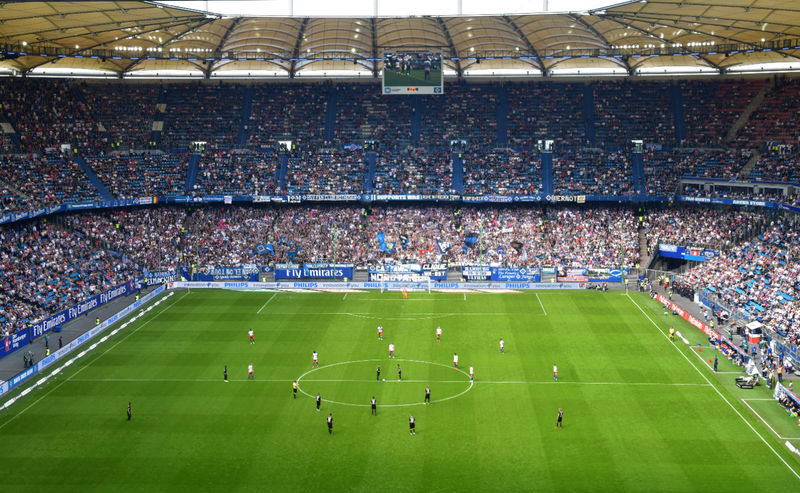How to Evaluate Sponsorship Proposals with a Scoring System
Learn to efficiently evaluate sponsorship proposals with strategies for scoring and assessment, helping your brand make informed, impactful decisions.
 Published at: Updated at:
Published at: Updated at:Introduction to Evaluating Sponsorship Requests
Major brands and corporations like Coca-Cola, Nike, and F1 receive thousands of sponsorship, grant, and donation requests every month. In 2023, Coca-Cola alone was estimated to spend over $277 million on sports sponsorship deals across the Americas. It’s evident that brands of this scale have well-established systems for managing and evaluating sponsorships efficiently.
Overview: This article covers everything there is to know about evaluating sponsorship requests, how to leverage a proposal scoring system, and strategies to maximize your brand’s sponsorship budget.
The Value of a Structured Sponsorship Evaluation Process
In today’s competitive landscape, brands, non-profits, and institutions receive an overwhelming number of sponsorship proposals. Without a structured evaluation process, it’s easy for teams to become bogged down in inefficiencies, or worse, miss out on high-value opportunities.
By creating a systematic approach to evaluating sponsorships, it can transform how your organization manages incoming proposals:
Alignment with Brand Strategy: Ensures every sponsorship supports your organization’s strategic goals, values, and objectives.
Maximizing ROI: Ensures sponsorship resources are allocated to opportunities that deliver the greatest value.
Efficiency Gains: Streamlines the review process, saving valuable time and enabling teams to focus on higher-value initiatives.
Transparency and Fairness: Promotes trust with stakeholders by providing a clear, objective framework for decision-making.
With a formalized process in place, your organization can foster consistent decision-making, strengthen its reputation, and achieve measurable results from sponsorship investments.

1. Laying the Foundation: Setting Brand Objectives and Criteria
A successful sponsorship strategy begins with a solid foundation. By defining clear goals, understanding your audience, and aligning internal teams, you can create a framework that ensures every sponsorship decision drives meaningful impact for your organization.
Clarifying Your Sponsorship Goals
Before evaluating sponsorship requests, it’s crucial to define what success looks like for your organization. Clear goals provide a roadmap for decision-making and ensure every sponsorship aligns with your broader vision. Key considerations include:
Brand Exposure: How will the sponsorship increase visibility for your brand across target markets?
Community Impact: Will the sponsorship contribute to your corporate social responsibility initiatives or create tangible benefits for local communities?
Social Responsibility: Does the sponsorship align with your organization's values and demonstrate a commitment to meaningful causes?
By clearly articulating these goals, you can ensure sponsorship activities complement your marketing and business objectives.
Mapping Out Your Target Audience and Market Reach
Defining your target audience is essential for maximizing sponsorship impact. Identify key demographic segments—such as age, profession, or location—and evaluate how a sponsorship can help your organization either access new markets or deepen connections with your existing customer base.
Example: A local community event may help deepen loyalty within a specific region, while a national campaign could expand brand awareness to untapped audiences.

Ensuring Internal Alignment
Internal alignment is key to a unified sponsorship management approach. Engage cross-functional teams, including marketing, finance, legal, and CSR, to clarify evaluation parameters, build consensus, and establish a clear budget. By fostering internal alignment, you create a streamlined process that prioritizes transparency and supports organizational goals.
2. Building a Sponsorship Submission Process
A well-structured sponsorship submission process is the backbone of effective sponsorship management. It ensures that all requests are evaluated consistently, efficiently, and fairly. By creating a clear submission form and leveraging automation, organizations can streamline intake while gathering the necessary information to make informed decisions.
3. Defining Evaluation Criteria
Clear evaluation criteria are essential for effectively assessing sponsorship proposals. While the specifics depend on your organization's goals, here are common criteria used to evaluate proposals:
Brand Alignment: Does the sponsorship support your brand’s values and strategic objectives?
Reach & Exposure: Will it expand your market reach and provide high-profile visibility?
Community Impact: Does it benefit communities or align with CSR and sustainability goals?
Relevance & Differentiation: Is it relevant to your audience and distinct from competitor efforts?
Capacity & Capability: Does the applicant have a proven track record and the capacity to meet requirements?
ROI: What are the short-term and long-term benefits, and how do they compare to benchmarks?

4. Creating a Sponsorship Scoring Matrix
A scoring matrix, also known as a sponsorship marketing matrix provides a structured, objective way to evaluate sponsorship proposals. By assigning weights to criteria and implementing a clear scoring methodology, you can ensure fairness, consistency, and alignment with your organization's goals.
Weighted Scoring Categories
Each evaluation criterion should be assigned a weight that reflects its importance to your organization’s objectives. Here’s a basic example of how weights might be distributed:
Evaluation Criteria | Weight (%) |
|---|---|
Brand Alignment | 30% |
Reach & Exposure | 20% |
Community Impact | 15% |
Relevance & Differentiation | 15% |
Capacity & Capability | 10% |
ROI & Sponsorship Uplift | 10% |
Weights should be tailored to your priorities. For instance, a company focused on CSR might allocate more weight to Community Impact, while a marketing-driven organization may emphasize Reach & Exposure.
Scoring Methodology
This is a basic overview of how a scoring matrix works, but it gives you a clear idea of how it can help your organization evaluate proposals based on your specific goals and requirements.
Set a Scoring Scale: Use a straightforward system, such as 1–5 or 1–10, where higher numbers indicate stronger alignment with your criteria.
Score Each Criterion: Evaluate proposals against each category using the predefined scale.
Calculate the Total Score: Multiply each score by its weight, then sum the results to generate an overall sponsorship score.
Interpret Results: Develop guidelines for decision-making based on scores. For example:
Accept proposals scoring 80% or higher.
Consider proposals scoring between 60%–79% for further review.
Decline proposals scoring below 60%.

5. Sponsorship Proposal Screening and Assessment
The sponsorship evaluation process starts by screening proposals using predefined criteria to eliminate unqualified submissions. A designated committee reviews eligible proposals using a standardized scoring system designed to identify opportunities with the highest ROI.
This approach ensures resources are allocated to proposals that deliver the greatest value. Proposals selected to move forward undergo due diligence, where references, financial details, and potential risks are verified to confirm alignment with organizational standards and objectives.
6. Refining Your Sponsorship Evaluation Process
An effective sponsorship evaluation strategy requires ongoing improvement and adaptation, beginning with clear KPIs to benchmark performance. Tracking progress through data collection and detailed post-sponsorship reporting allows you to monitor the effectiveness of your efforts. ROI analysis then builds on this foundation, offering insight into both short-term benefits, like visibility, and long-term impacts, such as brand equity. Applying these insights enables your team to adjust how future sponsorship proposals are evaluated to help maximize ROI.
Resources: To learn more about evaluating sponsorships in-depth, check out our article on: How to Measure Sponsorship ROI.

Evaluating Sponsorship Proposals with Touchstone™
For organizations managing sponsorship requests at scale, a simple scoring matrix isn’t enough. Our parent company, Lumency, operates in 21 country markets, engages with over 300 Tier 1 properties globally, and has evaluated more than 3,000 sponsorship deals over the past 10 years.
Touchstone™ was created to translate our team's expertise into a tool that makes sponsorship evaluation and management more efficient for large organizations. The platform leverages AI-powered proposal scoring and other features to streamline evaluations, ensuring consistency, transparency, and alignment with your brand’s goals.
Ready to get started?
Book a free demo today to see what Touchstone™ can do for your business.
Request demoAssess Proposals Based on Your Organization’s Priorities
Touchstone™ is fully customizable to meet the unique needs of our clients. Users can leverage the platform's advanced sponsorship management features to establish an objective process for evaluating the allocation of resources and funds. All submissions are compiled into a centralized database and scored based on the criteria defined by the organization. Whether you're looking for help with sponsorship management, grant management, or donation management, Touchstone™ empowers your organization with the tools needed to succeed.

Maximizing ROI with AI-Powered Proposal Scoring
The system provides data-driven insights & prioritizes high-potential opportunities, allowing your team to maximize ROI and focus on proposals that matter most. Here's how it works:
Sponsorship proposals are automatically analyzed using AI algorithms that assess alignment with your predefined criteria, such as brand objectives, reach, and ROI.
The platform generates a Touchstone™ Power Score, a comprehensive metric that provides an overall evaluation of a proposal’s potential impact.
Additional metrics, such as the Reach Score and Fit Score, give deeper insights into specific aspects of a proposal, like audience size and alignment with your brand’s goals.
By leveraging Touchstone™ and integrating advanced scoring capabilities, your organization can make smarter, faster, and more impactful sponsorship decisions.
Insight: Touchstone™ streamlines the process of managing and evaluating sponsorships, grants, and donation requests.
Conclusion
Maximizing the impact of your sponsorship investments requires a structured, data-driven approach that aligns decisions with organizational goals. By implementing a formal evaluation system, your team can streamline processes, ensure fairness, and achieve measurable results. By utilizing sponsorship management software, organizations can simplify and enhance their ability to manage and evaluate sponsorships, grants, and donation requests at scale.

Joywyn Daniel is the Head of Analytics, Insights & Research at Lumency, a global sponsorship marketing consultancy trusted by leading brands such as Pepsico, Nestle, and Canadian Tire. With over 13 years of expertise in consumer and fan insights, Joywyn plays a pivotal role in shaping Touchstone™, Lumency's innovative sponsorship management platform. Passionate about translating complex data into actionable recommendations, he shares his knowledge, tips, and experience to help brands streamline decision-making and optimize sponsorship strategies.





